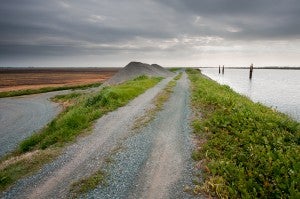Now that voter passage of a $7.5-billion water bond is firmly set in California’s rear-view mirror, it’s time to look forward and map out the road before us. How will the money be spent, and where will it drive change?
Beneficiaries of the new law will be vast, to be sure, but a good chunk of change is slated to support farm communities while restoring habitat and freeing water up for the environment. Here’s how:
$900 million for groundwater sustainability
This funding has the potential to improve the quality and reliability of groundwater resources that many agricultural communities across the state depend on. It is designed to ensure that projects are prioritized based on several criteria, including how the project will prevent the spread of groundwater contamination into storage areas, how the project will impact local water supply reliability, and whether the project can recharge vulnerable and high-use groundwater basins.
An additional $100 million in competitive grants is available for communities across the state to develop and implement sustainable groundwater plans.
Farmer incentives to protect habitat
The new law authorizes the use of a habitat exchange as a means to effectively implement conservation that results in measurable habitat improvements for at-risk species. The Central Valley Habitat Exchange is developing economic incentives for agricultural landowners to maintain or restore high-quality habitat on their property. When landowners restore habitat, they can sell credits on the open market either for mitigation or conservation purposes, allowing them to diversify their income while making changes that support the long-term recovery of important species like Chinook salmon and Swainson’s hawk.
EDF has teamed up with several partners, including state and federal agencies as well as local landowners, to pilot this concept for the threatened Swainson’s hawk. In doing so, we are laying the groundwork for farmers to get paid for habitat stewardship that results in measurable environmental improvements on the ground.
$725 million for water recycling
This funding may be used to support a variety of projects that will help the agricultural community improve the quality of their existing water resources. Eligible projects include contaminant and salt removal projects, dedicated distribution infrastructure to serve agricultural end-user retrofit projects to allow use of recycled water, pilot projects for new potable reuse and other salt and contaminant removal technology, and multi-benefit recycled water projects that improve water quality.
$100 million for water conservation and efficiency
The new law contains $100 million for water conservation and water-use efficiency plans, projects and programs, including agricultural water management plans or agricultural water use efficiency projects and programs.
The road ahead
As a recent article in Western Farm Press pointed out, getting the bond passed was the easy part. Now the real journey begins. I encourage the agricultural and environmental sectors, as well as local communities, to stick together to ensure that all the money in the bond is used wisely to benefit all of California.










